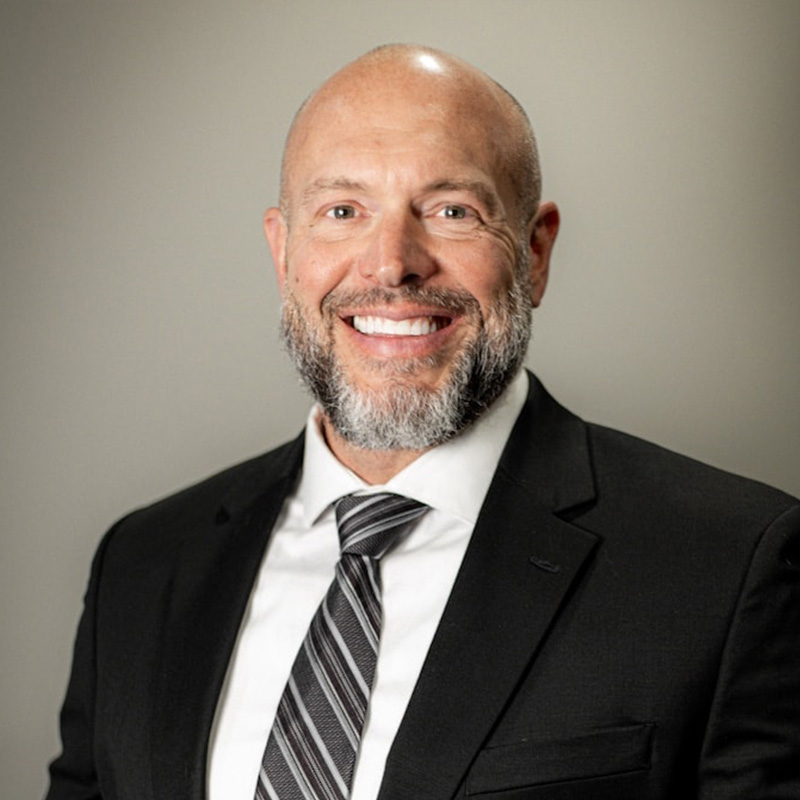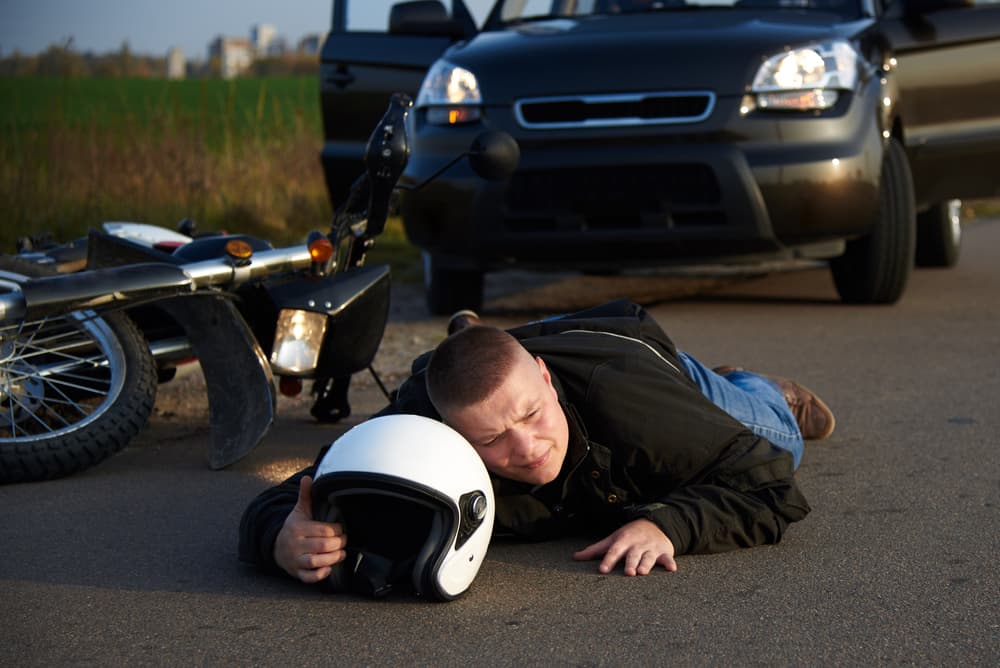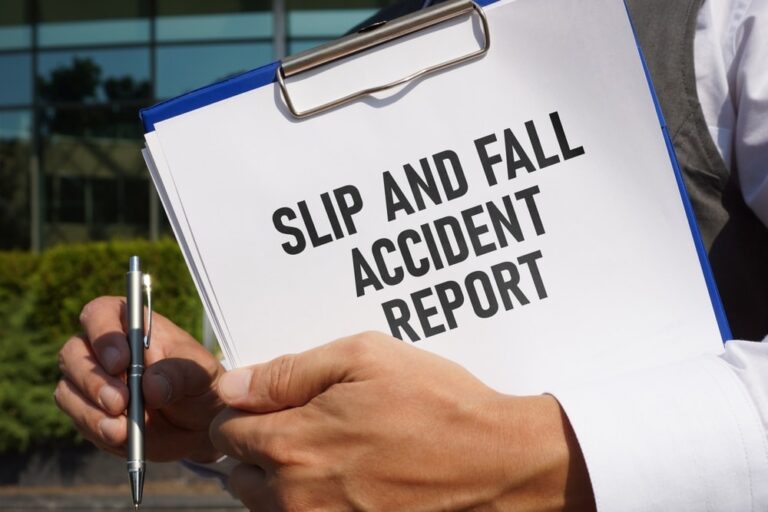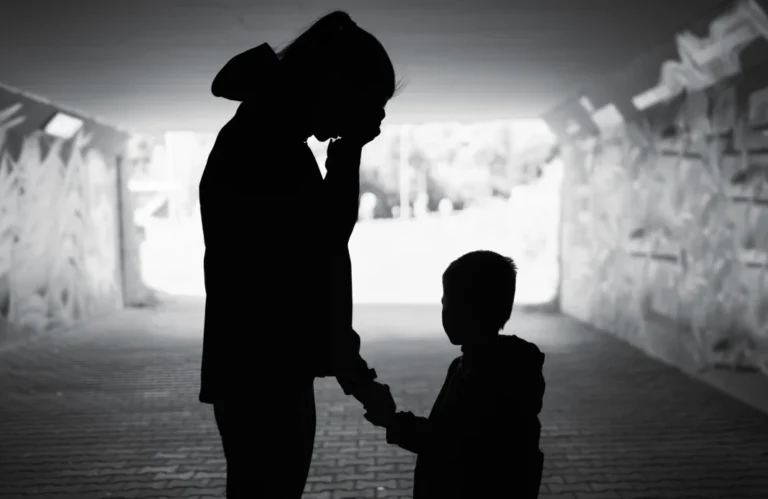Riding a motorcycle is often associated with a sense of freedom. The feeling of the wind against the body and the unobstructed view of the surroundings make motorcycle operators feel connected with the environment.
But the flip side is danger.
Motorcycles offer minimal physical protection compared to cars. Riders are exposed to the elements and have no safety cage, which means they are more vulnerable in a motorcycle accident.
The leading cause of motorcycle accidents is a traffic collision with another vehicle, like a car or heavy truck when a driver is speeding, distracted, impaired by substances, or fails to yield the right of way.
In a motorcycle accident, the largely unprotected motorcycle operator and their passenger are at serious risk for injury or death. The accident may throw them from the motorcycle onto hard pavement at high speeds where other vehicles may crush them.
A motorcycle accident lawyer’s primary goal is to help you recover the compensation you deserve for your injuries, damages, and losses after a crash.
The team of Madison motorcycle accident attorneys at Pemberton Personal Injury Law Firm has years of experience representing clients injured in motorcycle accidents. With offices in Madison and Baraboo, we help people throughout Wisconsin. We navigate the complex legal system on your behalf, allowing you to focus on your recovery while we handle the legal aspects of your case.
How Can Other Drivers Cause a Motorcycle Accident?
Motorcycles are smaller and less visible than cars, making it more likely that other drivers will overlook them. Drivers need to pay extra attention when they are in traffic with motorcycles and practice defensive driving. All too often, carelessness or reckless driving results in a deadly motorcycle crash.
Drivers may cause a motorcycle accident through:
- Failure to yield the right of way: Other drivers not yielding the right of way to motorcycles at intersections or while changing lanes can lead to accidents.
- Distracted driving: Texting, using smartphones, eating, or engaging in other activities while on the road, increases the risk of collisions.
- Speeding: Excessive speed reduces reaction time and increases the severity of motorcycle accidents.
- Impaired driving: Alcohol or drug impairment can impair a rider’s judgment and coordination, making them more prone to accidents.
- Unsafe lane changes: Drivers of cars and trucks can easily overlook motorcycles in blind spots, leading to accidents when other vehicles change lanes without proper awareness.
- Aggressive driving: Aggressive behaviors like tailgating, road rage, and aggressive maneuvers by other drivers can put motorcyclists at risk.
- Left-turning vehicles: Collisions often occur when vehicles make left turns in front of approaching motorcycles, misjudging their speed or failing to see them.
Drivers should vigilantly follow traffic rules and exercise caution to prevent accidents.
What Are Some Tips for Safely Sharing the Road With a Motorcycle?

Drivers of other vehicles need to notice motorcycles and keep an eye out for motorcycles.
Treat motorcyclists with the same respect and courtesy you would for any other vehicle. Remember that they have the same rights as other road users. Before making any maneuvers, take an extra moment to look for motorcycles. Their smaller size can make them less noticeable.
Motorcycles can easily hide in a vehicle’s blind spots. Before changing lanes or making a turn, check your blind spots carefully.
Avoid tailgating and maintain a safe following distance when driving behind a motorcycle. Motorcycles can stop more quickly than cars, so give them extra space to give you time to react and stop to avoid a collision. Motorcycles may also move around within their lane to avoid road hazards or improve visibility. Give them room to maneuver safely.
Always use your turn signals to indicate your intentions well in advance, giving motorcyclists and other drivers time to react and adjust their position if needed. Also, keep an eye out for a motorcyclist’s turn signals. Don’t assume a motorcycle won’t turn just because it’s in a straight-ahead position.
Pay special attention at intersections, as many motorcycle accidents occur when a car turns left in front of an oncoming motorcycle. Ensure the road is clear before proceeding.
Use extra caution in inclement weather. Rain, snow, and fog can reduce visibility and road traction. Exercise caution and reduce speed in adverse weather. Motorcycles are on the road year-round in many regions. Always prepare to encounter them, regardless of the season or the weather.
Never drive under the influence of alcohol or drugs, as impaired drivers are a significant danger to motorcyclists and all road users.
Pay attention to your surroundings and avoid distractions like texting or talking on the phone while driving. Distracted driving is a leading cause of accidents involving motorcycles.
Some motorcycles are louder than cars, but this doesn’t give you the right to blast your horn or intentionally rev your engine to annoy riders.
By the Numbers: Motorcycle Accident Statistics Nationwide
In its most recent Traffic Safety Facts sheet, the National Highway Traffic Safety Administration (NHTSA) reports that motorcyclists accounted for 14 percent of all traffic fatalities, the highest number of motorcycle operators killed since the Fatality Analysis Reporting System (FARS) was started in 1975.
NHTSA found that accidents killed 5,579 and injured 82,528 motorcyclists in just one year. Of the motorcyclists killed in traffic crashes, 94 percent (5,268) were riders and 6 percent (311) were passengers. (NHTSA includes two- and three-wheeled motorcycles in these statistics, as well as other types of motorbikes such as mini-bikes, mopeds, and motor scooters.)
In two-vehicle crashes, 76 percent of the motorcycles involved in fatal crashes were struck in the front. Only 7 percent were struck in the rear. According to NHTSA, 2,741 fatal two-vehicle crashes involved a motorcycle and another vehicle.
In 42 percent (1,158) of these crashes, the other vehicles turned left while the motorcycles went straight, passed, or overtook other vehicles. Both vehicles went straight in 575 crashes (21 percent).
Establishing Liability in a Motorcycle Accident
Your attorney can thoroughly investigate the motorcycle accident, collecting evidence such as witness statements, accident reports, and any available surveillance footage to establish liability. They can consult accident reconstruction experts or other specialists who can provide professional opinions on who is at fault.
Wisconsin follows an at-fault or tort system for car accidents, which means the at-fault driver must cover the damages of the other parties involved.
If the other party’s insurance company disputes liability, your attorney can negotiate on your behalf or take the case to court if necessary to protect your rights.
Wisconsin also follows a modified comparative negligence rule. This means that if you contribute to the accident, you can still recover damages, but your award may decrease by the percentage of fault assigned to you. For example, if you are 51 percent or more at fault, you may not recover any compensation.
Hire an attorney after a motorcycle accident in Wisconsin. An attorney can protect your rights and seek compensation for your losses.
Liable parties a lawyer may identify in a motorcycle accident include:
- Other drivers: The most common scenario is when another motorist’s negligence or recklessness leads to a motorcycle crash. This could involve failing to yield the right of way, distracted driving, drunk driving, or reckless driving.
- Road authorities: Government entities or private entities responsible for road maintenance need to maintain roads, provide adequate signage, and address dangerous road conditions. If they don’t, liability may fall on these authorities. Things like potholes and cracks, uneven surfaces, debris, faded road markings, and even a lack of proper signage can endanger motorcyclists more than other vehicle drivers. The two-wheeled nature of their vehicles makes them more sensitive to irregularities in the road surface.
- Construction companies: Motorcycle accidents can occur in road work construction zones. If the construction company fails to implement proper safety measures or adequately mark the construction zone, you may hold them liable.
- Third parties: Liability could also involve third parties, such as companies responsible for the maintenance of traffic signals or signs. If a malfunctioning traffic signal or inadequate signage played a role in the accident, you may hold the responsible third party liable.
- Employers: If the at-fault driver operated a vehicle as part of their job when the accident occurred, you may hold their employer liable under the doctrine of vicarious liability.
How Long Do I Have to File a Motorcycle Accident Claim?
In Wisconsin, plaintiffs must file personal injury claims within three years of the injury. Your lawyer may refer to this as the statute of limitations. When the statute of limitations expires, you cannot pursue the claim cannot in court.
Gathering evidence and building a strong case can take time, so don’t wait to find legal counsel to help you with your claim. Also, exceptions could affect the time limit for filing a motorcycle accident claim. An experienced personal injury attorney in Wisconsin can advise you about filing deadlines and any special limitations for your specific case.
Your lawyer can also help you with insurance laws that affect filing a claim. Wisconsin follows an at-fault or tort system for car accidents requiring the at-fault driver to cover the damages of the other parties involved.
Wisconsin also follows a modified comparative negligence rule. This means that if you partially caused the accident, you could still recover damages, but your award may decrease by the percentage of fault assigned to you. For example, if you are 51 percent or more at fault, you may not recover any compensation.
The legal team at Pemberton Personal Injury Law Firm knows these laws and will work hard to get the maximum compensation due to you.
Motorcycle crashes are often deadly, so you may need to file a wrongful death claim if an accident takes the life of your loved one.
In Wisconsin, the personal representative of the deceased person’s estate, usually someone appointed in the deceased person’s will or through the probate court, must file a wrongful death claim. The personal representative brings the lawsuit on behalf of the deceased person’s surviving family members, including spouses, children, and parents. The statute of limitations and comparative negligence laws also apply to wrongful death claims.
Contact a Motorcycle Accident Lawyer at Pemberton Personal Injury Law Firm Today

If a motorcycle accident seriously injured or killed you or someone you love, you don’t have to navigate the legal complexities alone.
The experienced personal injury attorneys from Pemberton Personal Injury Law Firm are here to assess your case and advocate for your rights. Our firm can fight to get you the compensation you deserve. We make it our priority to get to know our clients and their cases so we can best represent you.
We have offices in Baraboo and Madison and represent clients throughout Wisconsin. Arrange for a consultation with one of our car accident lawyers by calling (608) 448-6242 or filling out our online contact form. There is no cost or obligation when you meet with us. Let us help you get back on the road to recovery.

Attorney Rhyan J. Lindley represents Wisconsin clients with a focus on truck and motorcycle accidents, nursing home abuse, and wrongful death cases. Recognized as one of “The Best Lawyers in America” and part of the National Trial Lawyers’ “Top 40 Under 40,” Rhyan brings exceptional trial advocacy skills to every case he handles.






